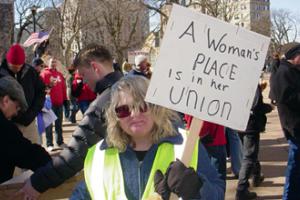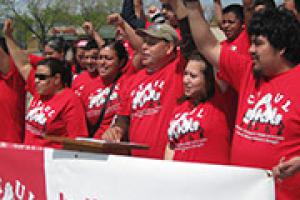Unions Flex Political Muscle at the Democratic National Convention -- But Uber and Airbnb Lurk
The American Prospect
 The labor movement's agenda was on full display at the Democratic National Convention in Philadelphia. Union delegates numbered roughly one-quarter of the convention’s 4,000-plus delegates. Still, there were stark reminders that labor has struggled to keep at bay the party’s coziness with corporations, especially those of the Silicon Valley disruption variety. Ride-hailing giant Uber—not unionized taxi cabs—served as the DNC’s exclusive shuttle service.
The labor movement's agenda was on full display at the Democratic National Convention in Philadelphia. Union delegates numbered roughly one-quarter of the convention’s 4,000-plus delegates. Still, there were stark reminders that labor has struggled to keep at bay the party’s coziness with corporations, especially those of the Silicon Valley disruption variety. Ride-hailing giant Uber—not unionized taxi cabs—served as the DNC’s exclusive shuttle service.






Spread the word